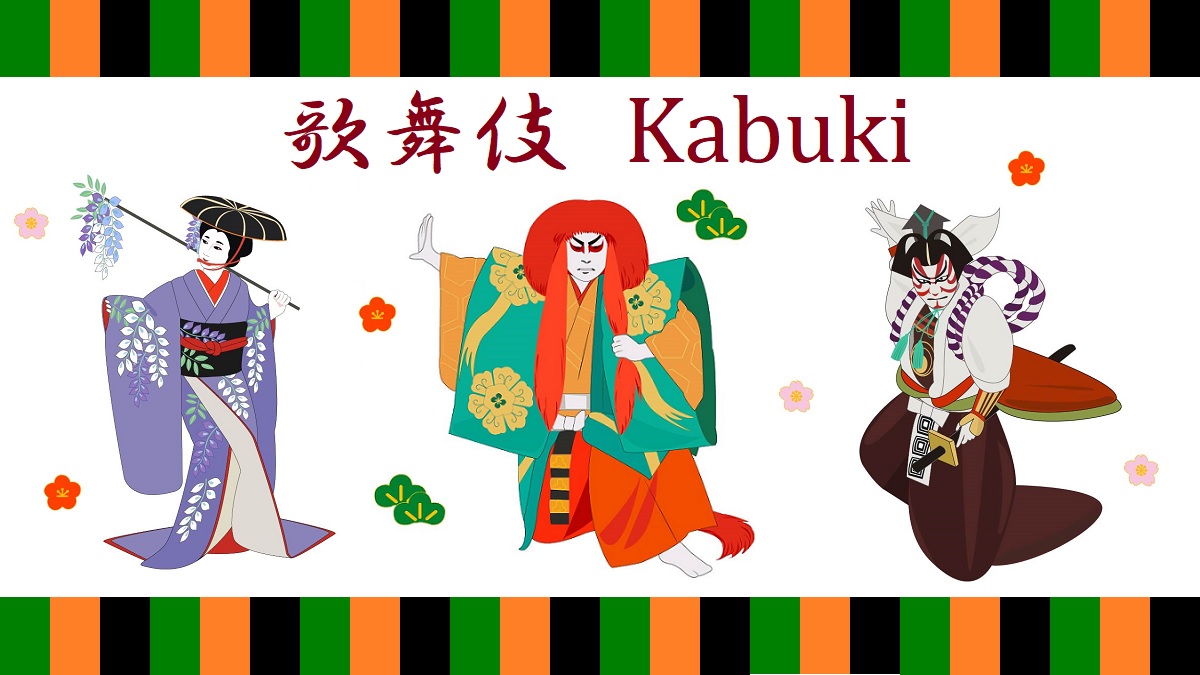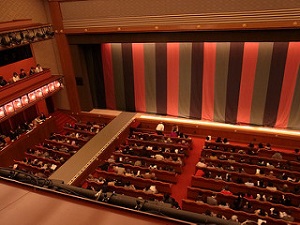Kabuki
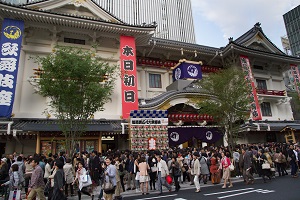
Kabukiza Theater in Tokyo
Kabuki is one of the traditional theater forms of Japan.
"Ka" means "sing", "bu" means "dance" and "ki" means "perform".
In the literature, Kabuki actors perform and dance to songs on a stage.
History of Kabuki
Kabuki is believed to originate from a play performed by Okuni who is a female attendant of Izumo Shrine and a traveling dancer.
She first presented her unusual play in Kyoto in 1603.
In the play, men played women's roles and women played men's roles with showy gestures.
This eventually developed into today's Kabuki, which is played entirely by only men.
Since Edo period (1600-1867), Kabuki had been the popular entertainment in Japan.
In Meiji period (1868-1912), Kabuki was polished up as a world-class art.
Therefore, the Kabuki-za Theater was built exclusively for Kabuki performances in 1889.
Since the 1960s, many overseas performances are held, and recently some new performances are held by eminent drama directors.
Elements of Kabuki
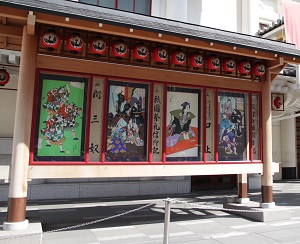
Billboard of the program in front of Kabukiza
The program in a day
One program of a day contains 3 to 5 plays.
2 or 3 plays of them are dramas.
They are historical dramas or narrative dramas, and it takes about 1 to 2 hours to play each drama.
Other plays are dance performances or short stories, and it takes 15 to 30 minutes to play.
Of course, one long drama is sometimes performed with divided 4 to 5 acts.
Between acts, there are 15 to 30 minutes break times.
So, the audience enjoy the program for 4 to 5 hours.
Stage
Stage of Kabuki has various devices.
There are certainly a revolving platform in the center of stage.
It makes transition in dramas easy.
Some parts of stage floor are made like elevator, and actors appears on it from below of stage.
The revolving platform has also a big elevator, and large props like a house are lifted up and down.
A runway is set up from the stage through the audience.
And, on the ceiling, there is the device to raise an actor for playing to fly in the sky.
Actors
Kabuki actors are all males.
They also play women in dramas.
Most Kabuki actors are the members of some Kabuki families.
Famous family names are Ichikawa and Nakamura.
In some plays, a child of the family also perform.
Usually the boys in such families play on stage from 4 to 5 years old.
Kumadori
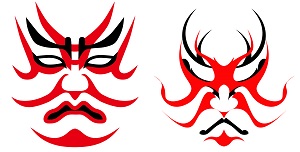
Various Kumadori makeups
Kumadori is unique stage makeup worn by Kabuki actors.
It is exaggerated makeup of blood vessels and muscle of the face.
Red kumadori expresses power, courage or youth, so hero or handsom wears.
Blue kumadori expresses evilness, so bad guy or ghost wears.
Brown kumadori also expresses evilness, so bad enemy or personification of evil wears.
Music
There is a room where the Kabuki musicians play at the side of stage.
Shamisen of plucked string instruments, tsuzumi and taiko like drum, and fue like flute are played there.
There are singers in this room.
Sound effect like wave or wind are played at backstage.
Shouting applause from audience
When the leading role plays at the climax, some audiences shout applause to the actor.
But the word is not "Bravo!".
You may hear, "Narita-ya!", "Narikoma-ya!", "Otowa-ya!" and so on.
These names are shouted by the audience who is the patron of the Kabuki family.
Seeing Kabuki
In Kabuki-za thearer in Tokyo, we can see Kabuki throughout the year.
In National Theater of Japan in Tokyo, we can see it for 4 to 5 months of the year.
In Nagoya, Kyoto, Osaka and Fukuoka, Kabuki is sometimes held.

